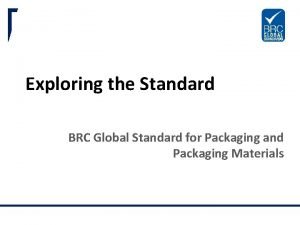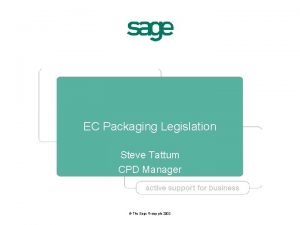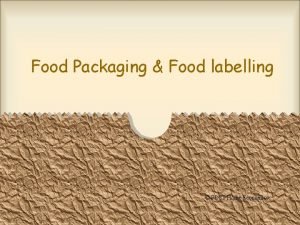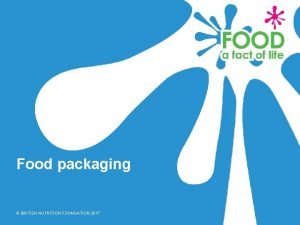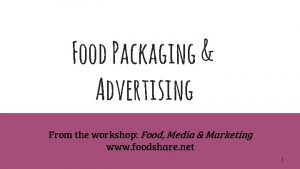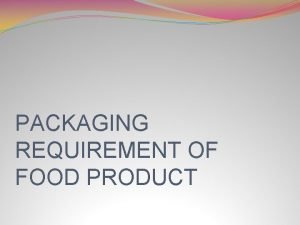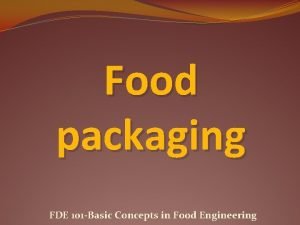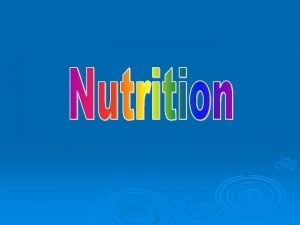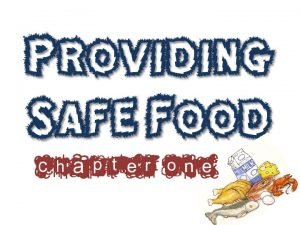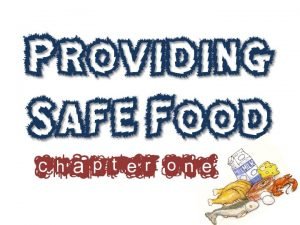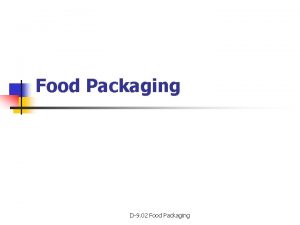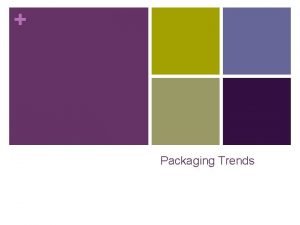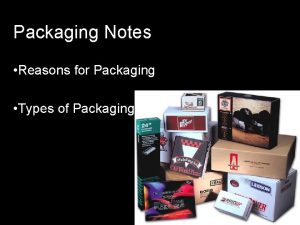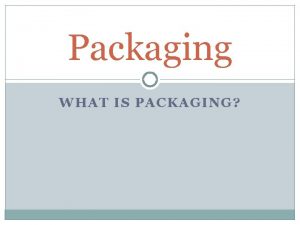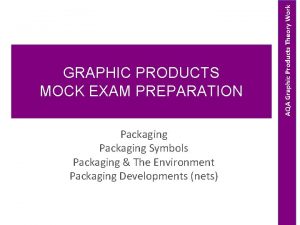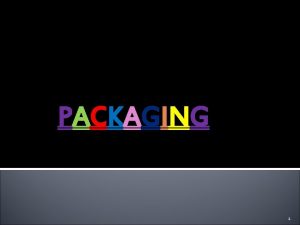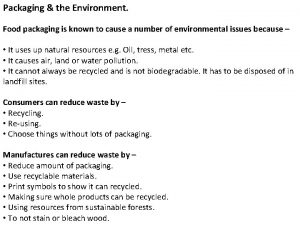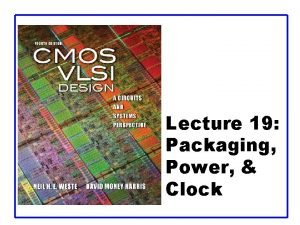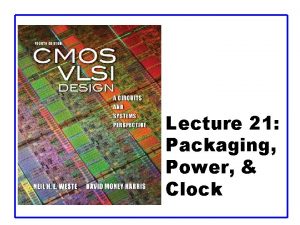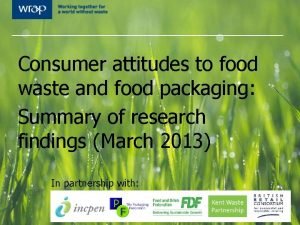Food Packaging Lecture IV Packaging is a critical
















- Slides: 16

Food Packaging Lecture IV

Ø Packaging is a critical component of food products. Ø It protects the product and preserve its inherit quality. • Prevents physical damage e. g knocking, shaking or crushing • Prevent contamination from microorganism/ pollution • Protects against dehydration and dampness • Barrier protection • Extend the shelf-life of foods • Convenience

Barrier Packaging There are two basic reasons for using barrier material for product packaging; Ø to keep desirable elements in (such as flavor, aroma or a controlled atmosphere), Ø to keep undesirable elements out (such as moisture, oxygen or other corrosive gases). Barrier Packaging is used to keep food fresh, prevent corrosion or rust, extend product shelf life and provide long term preservation.

Packaging Materials Cans Paper, board, foil Plastics Cellulose Films Glass

Polypropylene is used




Packaging Components plastic packaging materials has increasingly replaced metal and glass for food and beverage packaging

Advantages of plastics: §lower costs, §lighter in weight, §less apt to break or shatter, §transparent, §flexible, §direct food contact without changing sensory properties, §can be reheated in micro-wave (versus metal) general consumer preference because of convenience

Disadvantages of plastics: §high gas and water permeability; § absorption of food/beverage flavour; §low heat resistance (many foods require pasteurisation or sterilisation); §not tough enough (brittle); §poor appearance; §migration of low molecular weight compounds (e. g. monomers).

ØIn food packaging the term MIGRATION is generally used to describe the transfer of substances from the package to the food. ØSubstances that are transferred to the food as a result of contact or interaction between the food and packaging material are referred to as migrants.

ØMigration is a two-way process because constituents of the food can also migrate into the packaging material. Example: “Scalping” of flavour compounds from fruit juices by plastics. ØAlso compounds presents in the environment that surrounds the packaged food can be sorbed by the packaging and migrate into the food. Example: perfumes from soaps can be picked up by fatty foods under certain circumstances e. g. on the nature of the packaging materials used for the soap and the food , time of exposure

Polymer materials for food packaging Polyolefins ØThe most widely used polymers for food-packaging polyethylene and polypropylene ØThey are used in direct contact with food since they are chemically inert, thermosealable and provide an excellent moisture barrier. ØThey are used either alone, or as the innermost layer of high barrier packaging structures, like polyethylene laminated aluminium cartons.

Polyethylene CH 2 ----- CH 2 n § Polyethylene is the most popular plastic in the world. § This is the polymer that makes grocery bags, shampoo bottles, film, milk bottles, and children’s toys. § Polyethylenes are extremely tough, flexible, and chemical resistant. § However, their heat resistance, and load bearing capability are limited. § For such a versatile material, it has a very simple structure, the simplest of all commercial polymers. PE formed from the polymerisation of ethylene

Polypropylene’s (PP) chemical structure is very similar to PE, however, on each second carbon atom in the backbone a methyl group is attached CH 2 ----- CH CH 3 n Molecular structure of PP. These methyl groups greatly restrict molecular rotation and flexibility, resulting in significantly greater stiffness than PE.
 Critical semi critical and non critical instruments
Critical semi critical and non critical instruments Principle of sterilization
Principle of sterilization Brc standard 8
Brc standard 8 Steve tattum
Steve tattum 01:640:244 lecture notes - lecture 15: plat, idah, farad
01:640:244 lecture notes - lecture 15: plat, idah, farad Unit 2 food food food
Unit 2 food food food Food chain food chain food chain
Food chain food chain food chain Critical reading meaning
Critical reading meaning What is food packaging in home economics
What is food packaging in home economics Objectives of food packaging
Objectives of food packaging Food packaging ads
Food packaging ads Functions of packaging
Functions of packaging Active packaging
Active packaging Food scientist measure food energy in
Food scientist measure food energy in Tcs food
Tcs food Tcs food
Tcs food Food quantifiers exercise
Food quantifiers exercise


